Museum Display Information
Introduction to the British Army
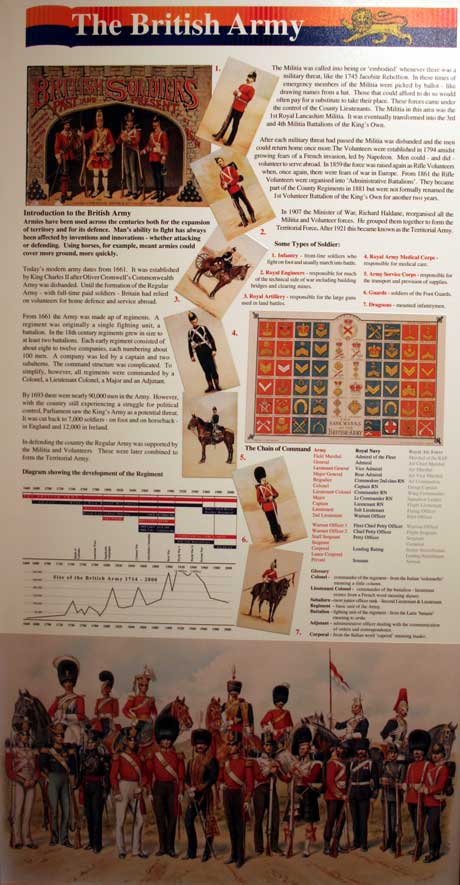
Armies have been used across centuries for both the defence and
expansion of territory. The invention and discovery of new materials and
techniques increased man's ability to attack, defend and fight. The use
of the horse, for example, meant that attacking armies could travel over
far greater distances.
Today’s modern army dates from 1661 when it was established by King
Charles II following the disbanding of the Commonwealth Army of Oliver
Cromwell. Until the formation of the Regular Army (full time paid
soldiers) Britain had relied on volunteers for home defence and service
abroad.
From 1661 the Army was made up of regiments. A regiment was originally a
single fighting unit, called a battalion; this changed in the 18th
Century when Regiments were formed of at least two battalions.
Each regiment consisted of about eight to twelve companies. Each company
contained about one hundred men with one captain and two subalterns.
The command structure was complicated, however to simplify, all
regiments were commanded by a Colonel, a Lieutenant Colonel, a Major and
an Adjutant.
By 1693 the Army consisted of nearly 90,000 men. With the country still
experiencing a struggle for political control, Parliament saw the King's
army as a potential threat and cut its size to 7,000 Horse and Foot
soldiers in England and 12,000 in Ireland.
As well as the Regular Army, with full time paid soldiers, the defence
of Britain has been supported by the Militia, Volunteers and the
Territorial Army.
The militia was established or 'embodied' from time to time under the
control of the County Lieutenants whenever there was a military threat
for example the 1745 Jacobite Rebellion. In times of emergency
membership was drawn from local inhabitants by ballot, drawing names out
of a hat. People could pay for a substitute to take their place. In this
area the 1st Royal Lancashire Militia eventually became the 3rd and 4th
(Militia) Battalions of the King's Own.
The Volunteers were established in 1794 with fears of invasion by the
French under Napoleon. Men could and did, volunteer to serve abroad. The
Volunteers were reformed in 1859 as Rifle Volunteers when again there
was fear of war in Europe. The Rifle Volunteers were organised into
Administrative Battalions from 1860, and became part of the County
Regiments in 1881. By 1883 the local rifle volunteers became the 1st
Volunteer Battalion of the King's Own.
In 1907 the Minister of War, Richard Haldane, reformed all the Militia
and Volunteer forces grouping them together in the Territorial Force.
After 1921 this became the Territorial Army.
Glossary:
Illustrations:
Four illustrations from ‘A plan of a review as performed by the 4th or
King’s Own Regiment, when reviewed by His Majesty in Hyde Park, 17th
July 1765.’
Accession Number:
The battalion drawn up to receive the reviewing general.
Accession Number:
The battalion marching past by grand divisions.
Accession Number:
The officers, sergeants, drummers etc. posted during ye manual exercise.
Accession Number:
Officers, sergeants and drummers, etc. posted for the firing and
manoeuvres.
Accession Number:
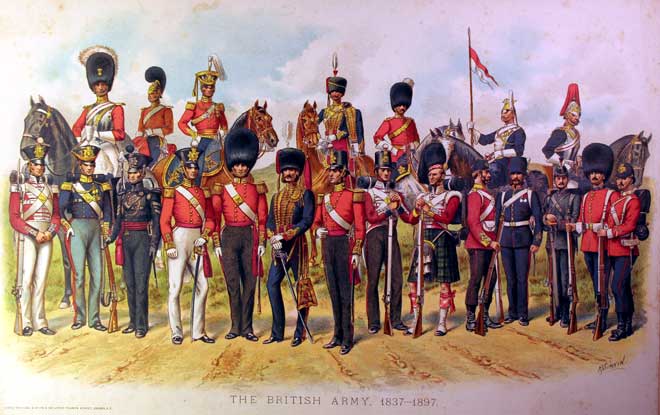
The British Army 1837-1897
Accession Number: KO0686/07
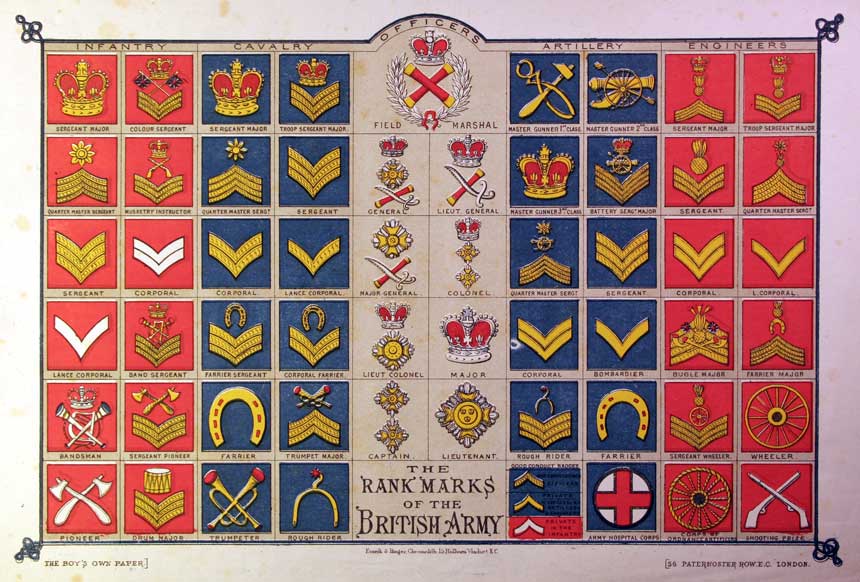
The Rank Marks of the British Army, taken from ‘The Boy’s Own Paper’
from c. 1890s
Accession Number: KO0686/06
Types of Soldiers of the Army circa 1900:
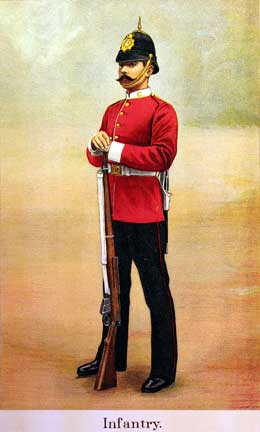
Infantry
Front line soldiers who fight on foot and usually march into
battle.
Accession Number: KO2490/290
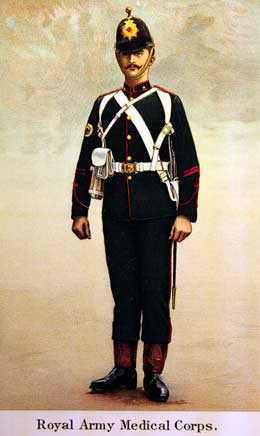
Royal Army Medical Corps
Responsible for the medical care of the army.
Accession Number: KO2490/291
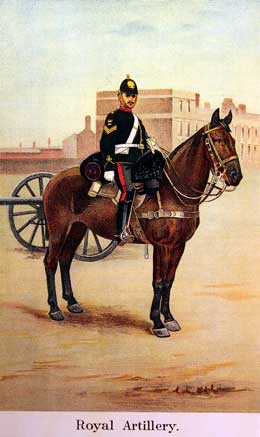
Royal Artillery
Responsible for the large guns used in land battles.
Accession Number: KO2490/292
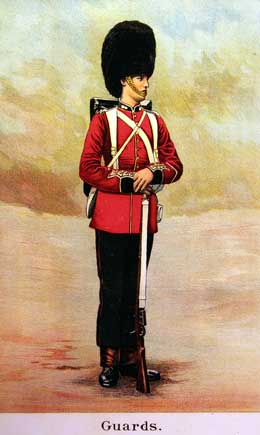
Guards
A soldier of the Foot Guards.
Accession Number: KO2490/293
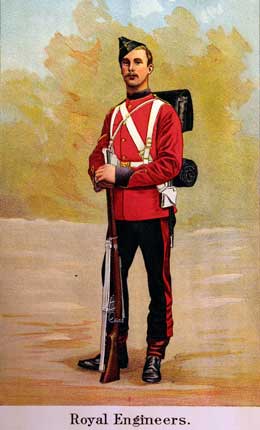
Royal Engineers
Responsible for much of the technical side of war, including bridge
building, mine clearance and postal services.
Accession Number: KO2490/294
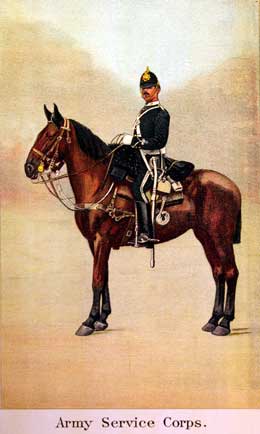
Army Service Corps
Responsible for the transport and provision of supplies.
Accession Number: KO2490/295
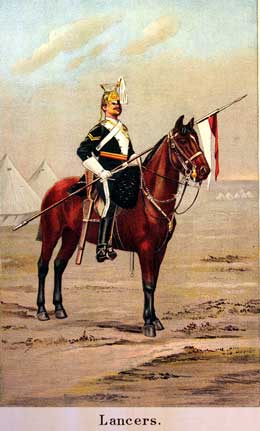
Lancers
Accession Number: KO2490/296
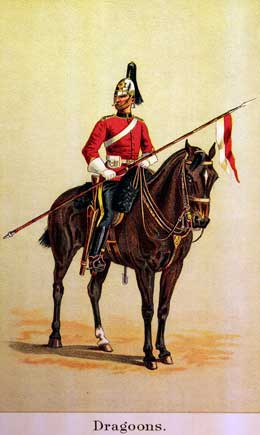
Dragoons
Mounted infantryman.
Accession Number: KO2490/297
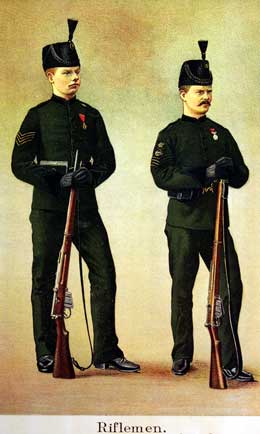
Riflemen
Accession Number: KO2490/298
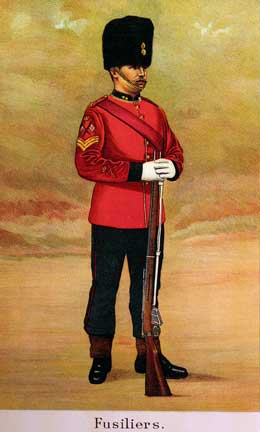
Fusiliers
Accession Number: KO2490/299
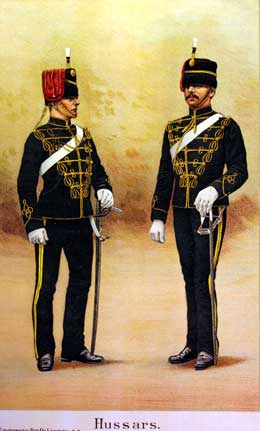
Hussars
Accession Number: KO2490/300
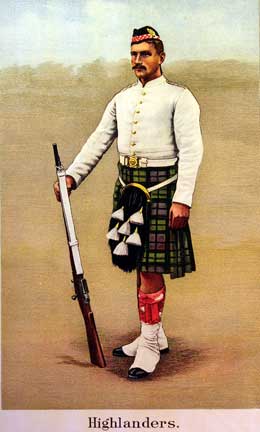
Highlanders
Accession Number: KO2490/301
© Images are copyright, Trustees of the King's Own Royal Regiment Museum.
You must seek permission prior to
publication of any of our images.
Only a proportion of our collections
are on display at anyone time. Certain items are on loan for display
in other institutions. An appointment is required to consult any of
our collections which are held in store.
















